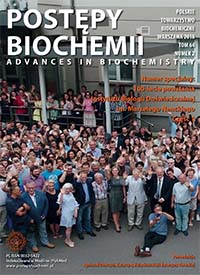Spotlight on epigenetics as a missing link between obesity and type 2 diabetes
DOI:
https://doi.org/10.18388/pb.2018_126Abstract
Type 2 diabetes (T2D) is a complex disorder that is caused by a combination of genetic, epigenetic, and environmental factors. β-cell failure and insulin resistance in peripheral tissues that are induced by lipid overload are main hallmarks of T2D. The mechanisms that link obesity-driven alterations of lipid metabolism and T2D are still elusive, thereby impeding the development of effective prevention and treatment strategies. Although genetic variants that have been identified in high-throughput studies comprise an appreciable proportion of the genetic component of T2D, they explain < 20% of the estimated heritability of T2D. A growing body of evidence suggests an intrinsic role for epigenetic modifications in the pathogenesis of T2D. The epigenetic regulation of gene expression in tissues that play a key role in the obesity-related development of T2D has been demonstrated, including PDX1 in pancreatic islets, PPARGC1A in skeletal muscles, ADIPOQ in adipose tissue, and TXNIP in the liver. The present review summarizes our current knowledge of crosstalk between the epigenetic control of gene expression, particularly via DNA methylation, toxic
lipid mediators, and the pathogenesis of obesity-related T2D.
Downloads
Published
Issue
Section
License
All journal contents are distributed under the Creative Commons Attribution-ShareAlike 4.0 International (CC BY-SA 4.0) license. Everybody may use the content following terms: Attribution — You must give appropriate credit, provide a link to the license, and indicate if changes were made, ShareAlike — If you remix, transform, or build upon the material, you must distribute your contributions under the same license as the original. There are no additional restrictions — You may not apply legal terms or technological measures that legally restrict others from doing anything the license permits.
Copyright for all published papers © stays with the authors.
Copyright for the journal: © Polish Biochemical Society.




